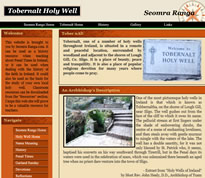 I recently was made aware of a relatively new iOS app called “Tellagami” and became intrigued by its possibilities in an educational setting. The app allows the user to create short animated videos (each called a “Gami”) to tell a story, give a message or explain something. The app has a really easy three-step process to creating your animated video: create the scene; add the dialogue; save or share the video.
I recently was made aware of a relatively new iOS app called “Tellagami” and became intrigued by its possibilities in an educational setting. The app allows the user to create short animated videos (each called a “Gami”) to tell a story, give a message or explain something. The app has a really easy three-step process to creating your animated video: create the scene; add the dialogue; save or share the video.
Creating the Gami is easy. You firstly create your character by customising its appearance. You can also give the character a facial emotion. You then insert a background scene from the available scenes within the app. However, you also have the option of inserting an image of your own, which offers great possibilities. The character can be placed anywhere against the background image by dragging it into place. It can also be re-sized by pinching it and it can be rotated.
To have the character speak, you simply type in some text or record your voice. The amount of text the character can speak is limited to 450 characters, which really is ample. There are also six different male voices and five female voices to choose from. When your Gami is completed, you can choose to save it or share it via Facebook, Twitter, Email or SMS/Text.
I think that this app has great possibilities for use in schools for a variety of reasons and subjects, limited only by the pupil’s/teacher’s imagination. They could be used in literacy lessons to give a response to a text; they would be great to explain a science experiment; they have great possibilities for Gaeilge as you can record audio for the app; the list of possibilities is endless.
The free app is available for iPhone/iPod and iPad. There is not as yet a version for Android devices.
This video explains what a “Gami” is:
This is a quick example that I created of how the Tellagami app could be used in the classroom. I just used some text that one of my pupils from last year wrote in response to a particular part of the novel we had been reading, “Faraway Home” by Marilyn Taylor. This is one of the characters from the novel, Karl, talking about his new life in Northern Ireland as a refugee during World War II.





